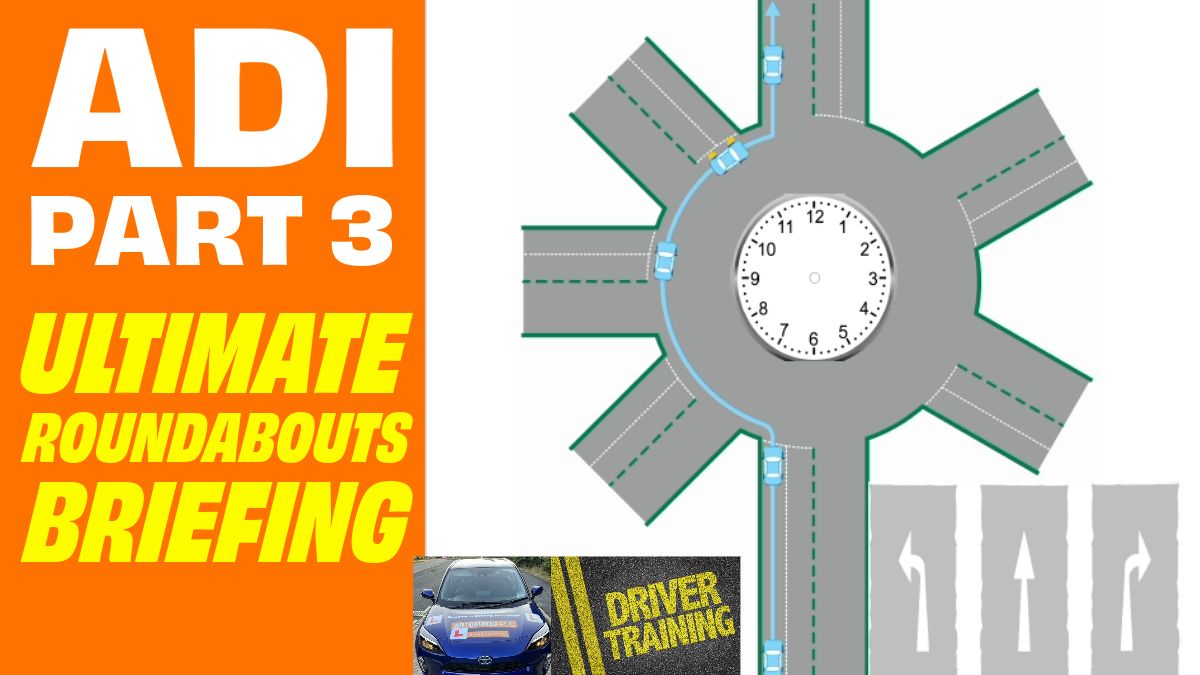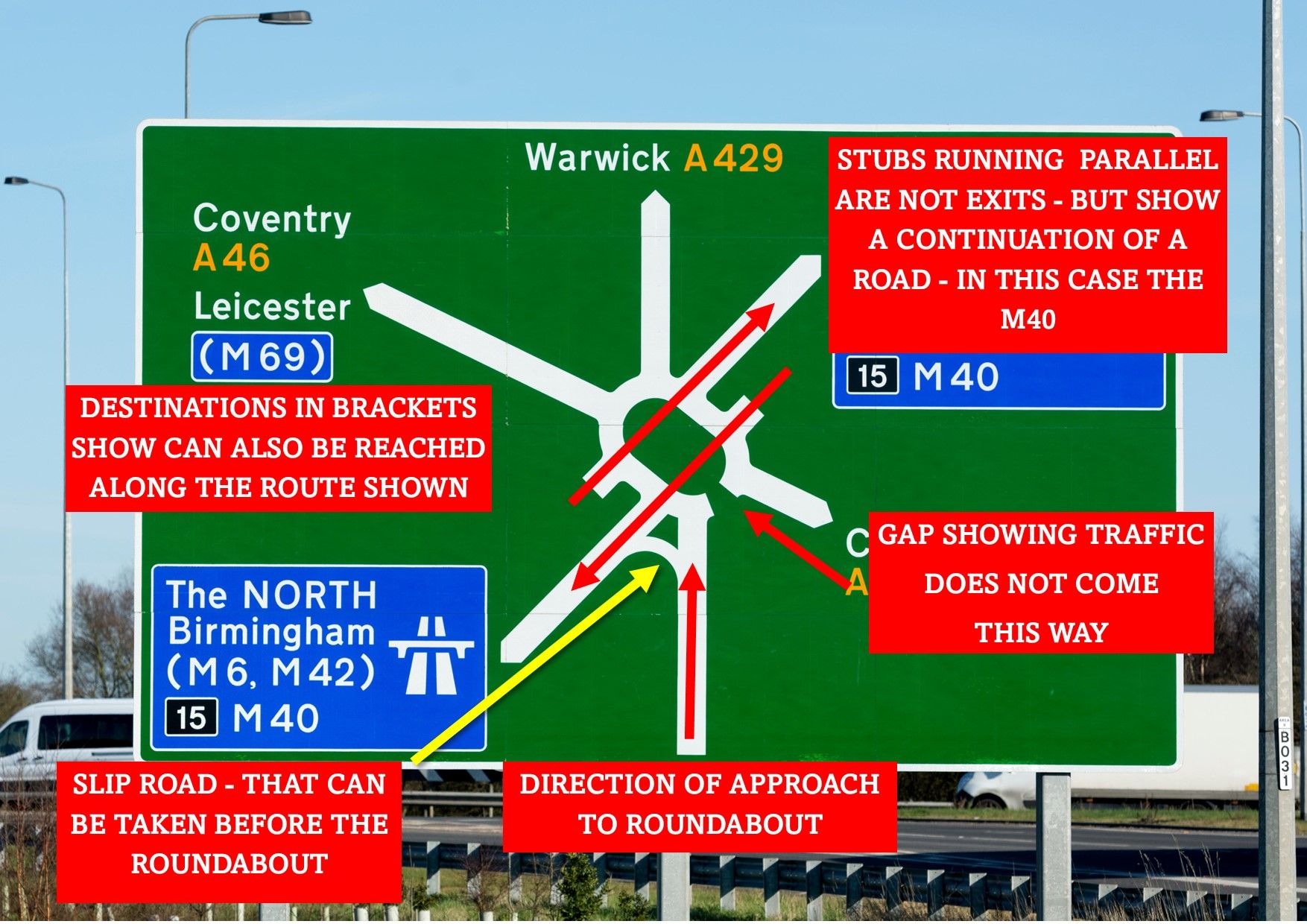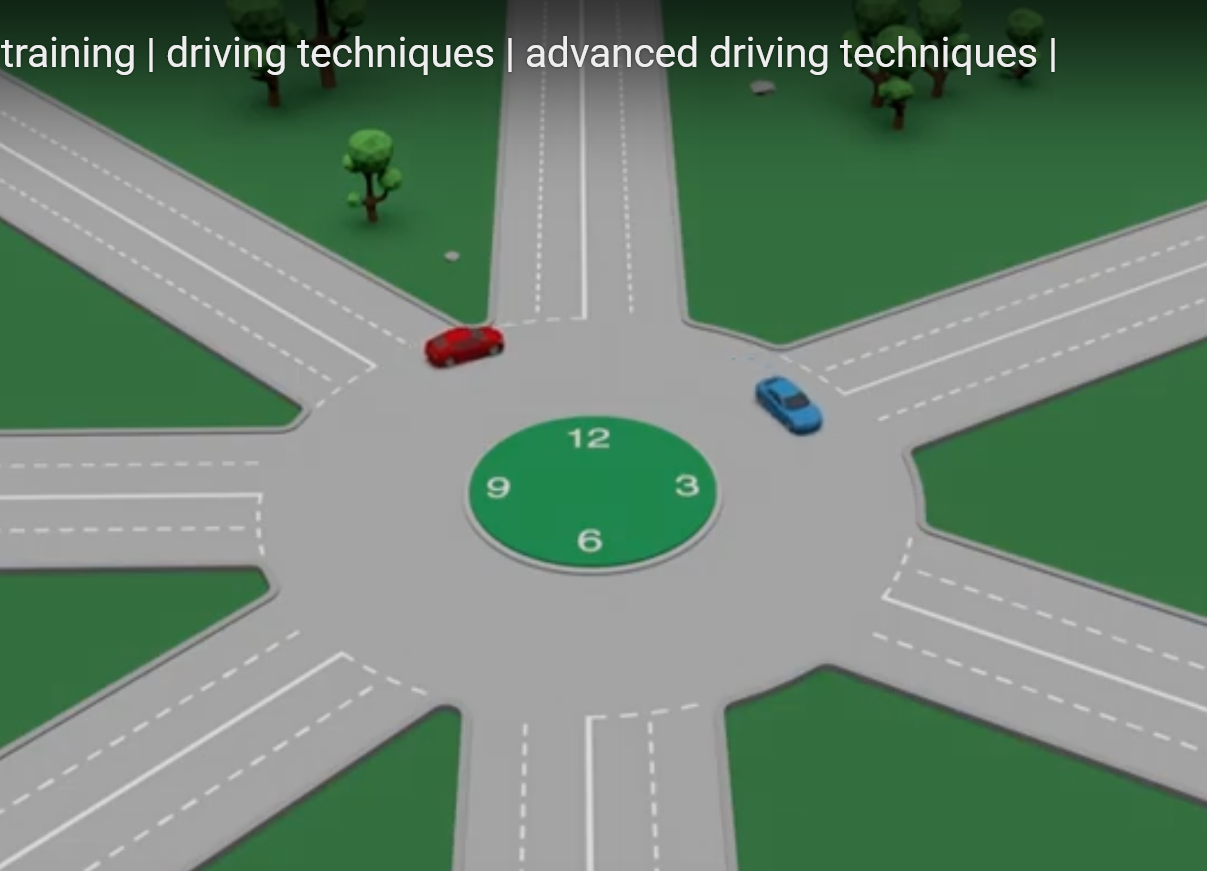The Ultimate guide to ADI Part 3 Roundabouts
ADI Part 3 Roundabouts
ADI Part 3 Roundabouts in the UK
The Purpose of roundabouts in the UK is to keep a free flow of traffic. Being able to identify roundabouts, know which lane you need and how to deal with roundabouts will help you become a better driver and driving instructor.
Traffic approaching from your right have priority so you must give way to any road users approaching from your right.
You are teaching your pupil to approach a roundabout 100 miles away, that they have never been or seen in their entire life --- TO SAY TO THEM CHOOSE THE MOST APPROPRIATE LANE IS RIDICULOUS - MOST APPROPRIATE - BASED ON WHAT?
They've never done it before and they are seeing it for the first time approaching at 40mph - they have 15 seconds to figure it out - explain it in 10 words or less!
To get a pupil to base it on the most appropriate decision - there has to be a groundwork - a basic principle to follow, otherwise you are getting them to take a guess and hope that they don't crash! If i offered to teach you how to wire a washing machine, and then as you held up 4 different coloured wires and asked "Which 2 do I join together?"
How would you feel about my ability as a teacher and an electrician, if i said to you "Pick the 2 that seem the most appropriate!"
Woould you be willing to trust your life based on that? Would you need to be given a base idea of how to choose the correct wires? Would you trust someone who hadn't given you that base to build on? - Me neither!
The same is true with roundabouts - You see driving instructors who teach this and it takes them a whole web page or blog article to try and explain what they mean and to us as experienced drivers it is confusing - HOW ARE YOU TRYING TO TELL A LEARNER WHO IS STRUGGLING WITH ROUNDABOUTS HOW TO DECIDE THE LANE POSITION - IF YOU CAN'T DO IT FOR AN EXPERIENCED DRIVER IN LESS THAN 5000 WORDS!
The way we teach is a guide - and as with any guide, there are exceptions - which is why the highway code and Essential skills ALWAYS says "Unless the road markings and signs say otherwise" - An exception.
There are roundabouts where traffic on the Roundabout GIVE WAY TO THE LEFT - Do you hear any driving instructors say "You shouldn't teach that on roundabouts you should give way to the right" - Of course not - BUT NOT EVERY roundabout is give way to the right. However because the majority ARE then its a great guide to use, UNLESS road markings and signs say different (an exception)
ADI Part 3 - What the Highway Code Says
ADI Part 3 Roundabouts for Driving Instructor Training
When it comes to roundabouts as a driving instructor you are trying to teach principles that will allow the learner to drive on any roundabout in the uk, safely and in accord with the relevant guidance.
The 2023 Highway code says this
LEFT = Left Lane .............Right = Right Lane
When taking any intermediate exit, unless signs or markings indicate otherwise
- select the appropriate lane on approach to the roundabout
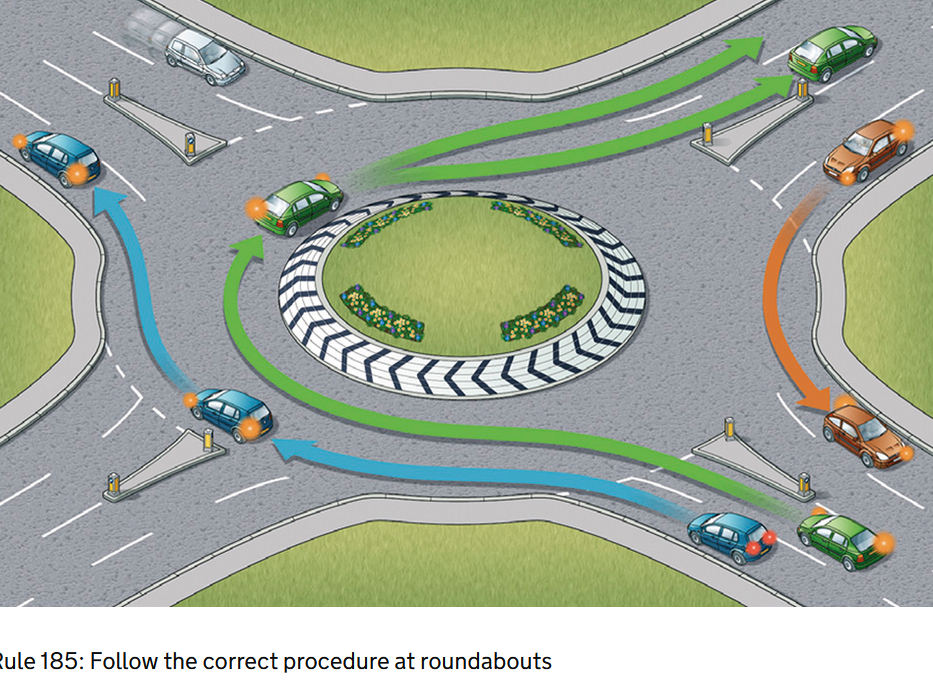

Going Ahead at Roundabouts - Highway Code Shows Left Lane
The Highway Code 2023 Edition has a picture denoting lane position on roundabouts. You can clearly see from the picture that the blue car that is going ahead at the roundabout os shown as left lane only - IT DOES NOT show left OR right lane
If this was the case then roundabouts where straight ahead is from right lane only would not be marked as such, it would just be normal that everyone presumed if the left lane was left only - you could just use the right lane.
Teaching Roundabouts a drop in driving standards
There seems to be a lot of change in the way that roundabouts are not only marked, but the signage as well. This continually makes it harder to teach in a way that is uniform throughout the country. The best, simples and easiest way of teaching the basics of lane positioning is the 12 o'clock method.
It is WAY better than any alternative - the amount of times you hear people say, "First and second exit is left lane, third and fourth exit is right lane" -- WRONG!!!!!
A lot of the problems have come from local authorities and The Highway Agency not knowing how to sign roundabouts properly, put lane markings correctly or just design them with traffic in mind.
For example some roundabouts let you go right from the left lane - most don't - Some don't have signs on approach - Some have one sign saying straight ahead is first exit, then within a few feet another sign saying it is actually left!
But you now have some instructors saying you just choose the lane you feel most appropriate???? - So everyone just does what they feel is right?? - No wonder the DVSA says there is a drop in teaching standards amongst driving instructors!!
SEE our page 12 o'clock rule on roundabouts.
Roundabouts - Driving the Essential Skills
Driving the Essential Skills 2023 edition states
"Going Ahead: Approach in the left hand lane - If you can't use the left hand lane - use the lane next to it.
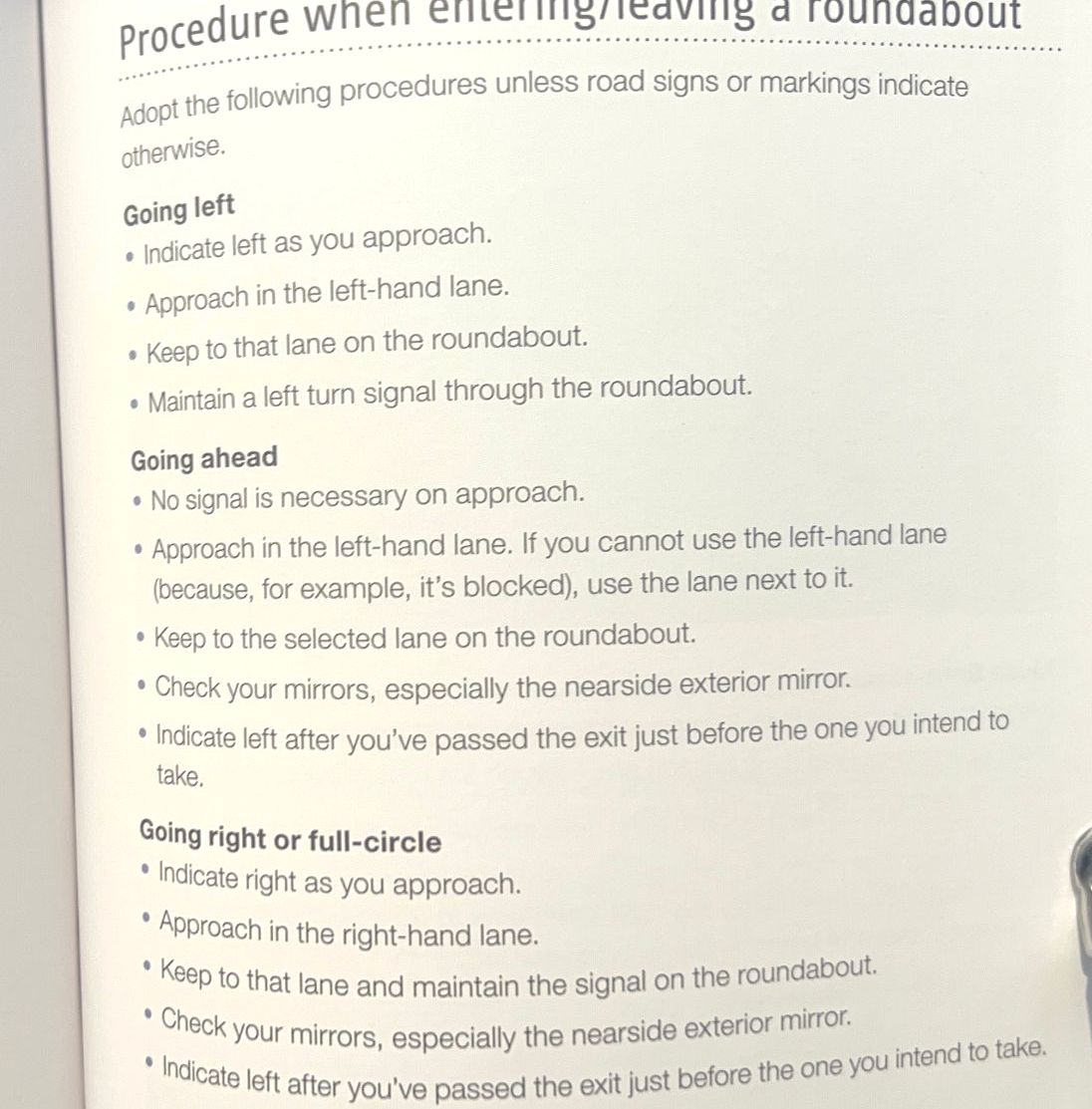
The 12 O'clock Rule is not a Rule
Just to get this straight - the 12 O'clock rule that is used on roundabouts - Is not actually a rule - IT IS however the best, easiest and quickest way to teach people the basics for deciding lanes on roundabouts.
We teach people to learn to drive in Telford which currently has, as of June 2023, has over 120 roundabouts - We teach the clockface guide and have a very good pass rate
We teach people to become driving instructors for ADI Part 2 and ADI Part 3 using the clockface method - NONE are ever told by the DVSAexaminers for either driving lessons, ADI Part 2 or ADI Part 3 - You are doing roundabouts wrong or You are tring to teach roundabouts wrong.
So teaching this method is acceptable to learners, advanced drivers, potential driving instructors and the DVSA!!!
Identifying a Roundabout
The easiest way to identify a roundabout is by spotting the road signs early as possible.
The most common roadsign to identify an upcoming roundabout is the triangle one pictured on the right.
The arrows signify the direction of travel, showing that traffic is going to be travelling in an anti-clockwise direction
Roundabout Signs
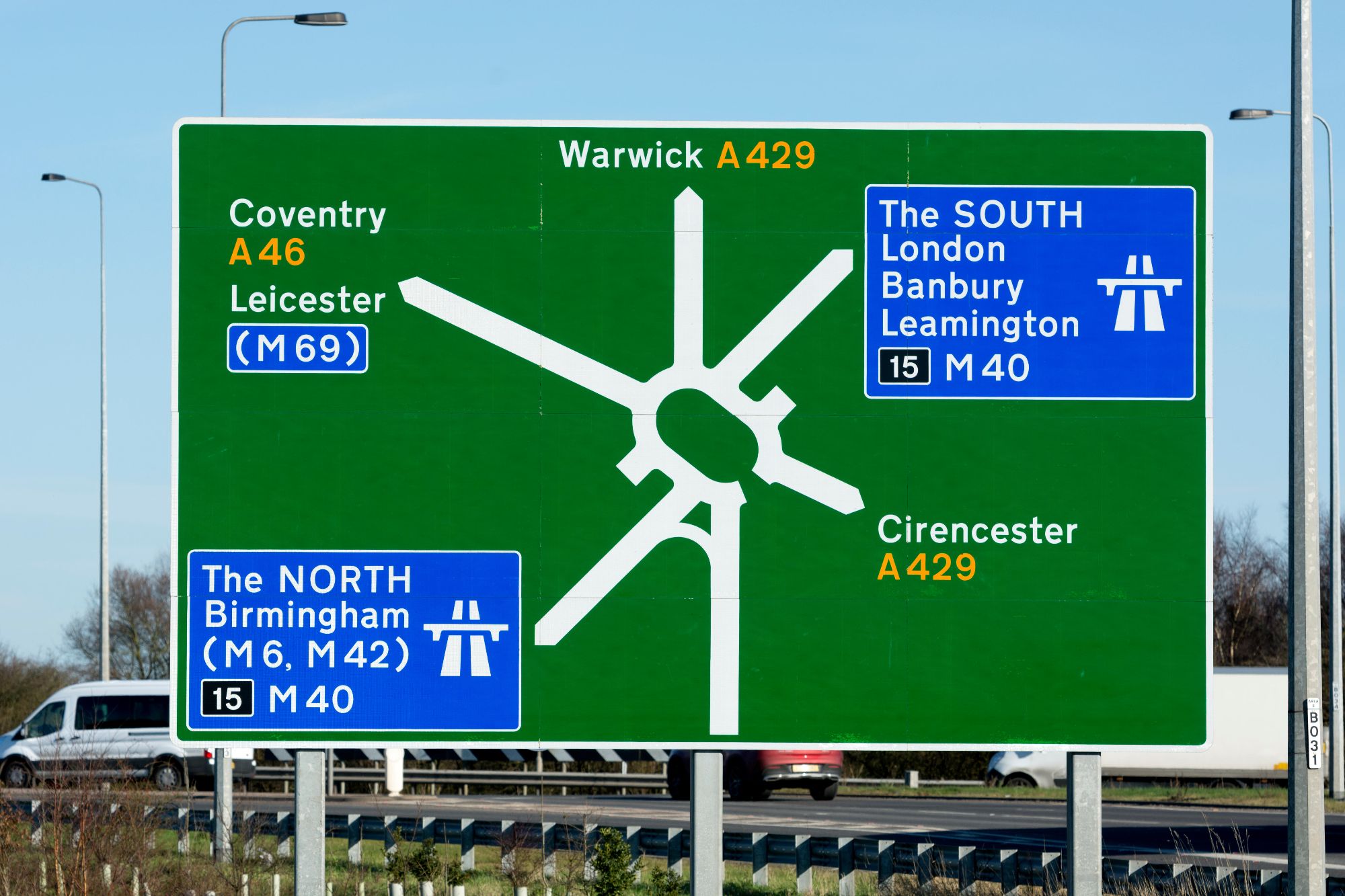
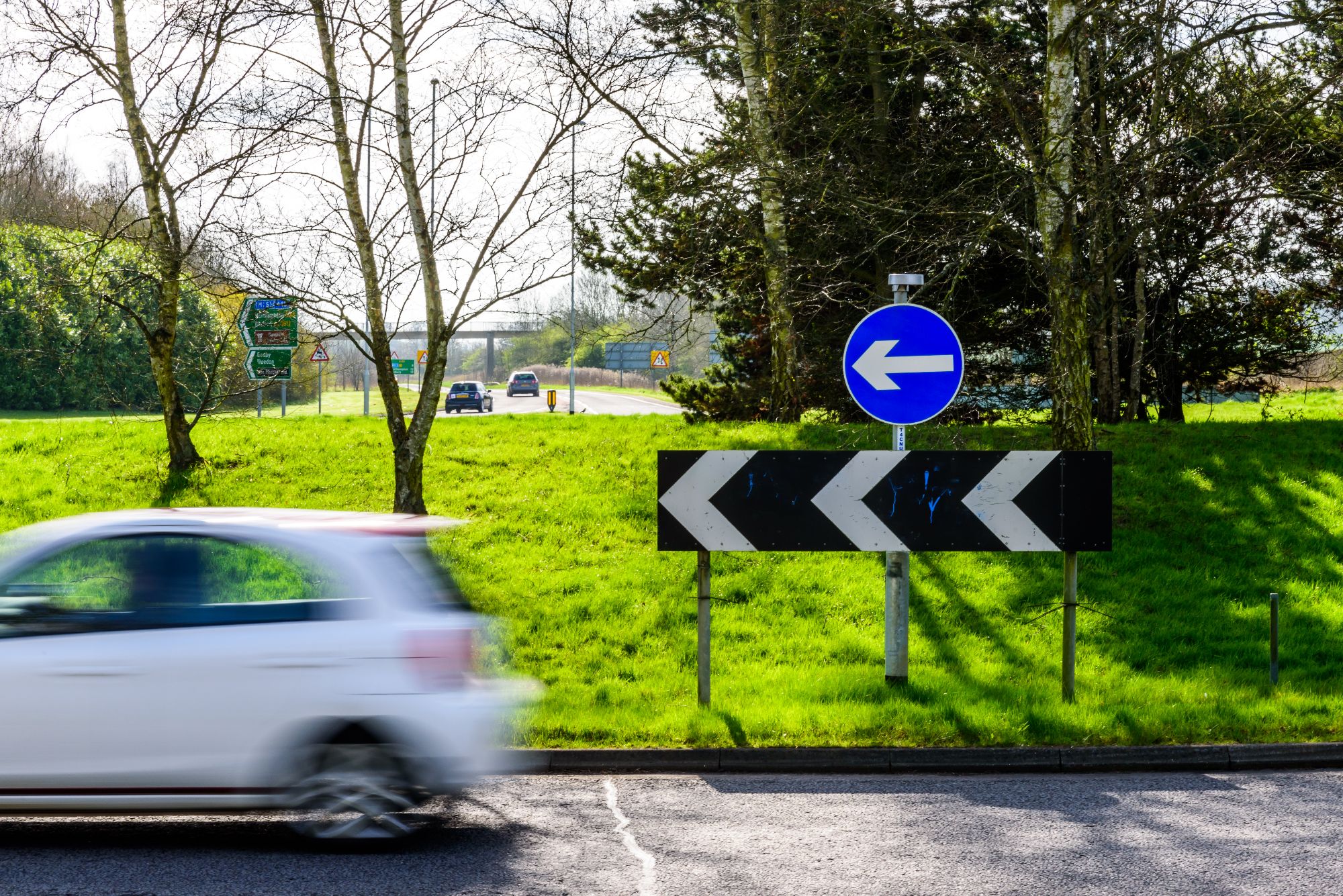
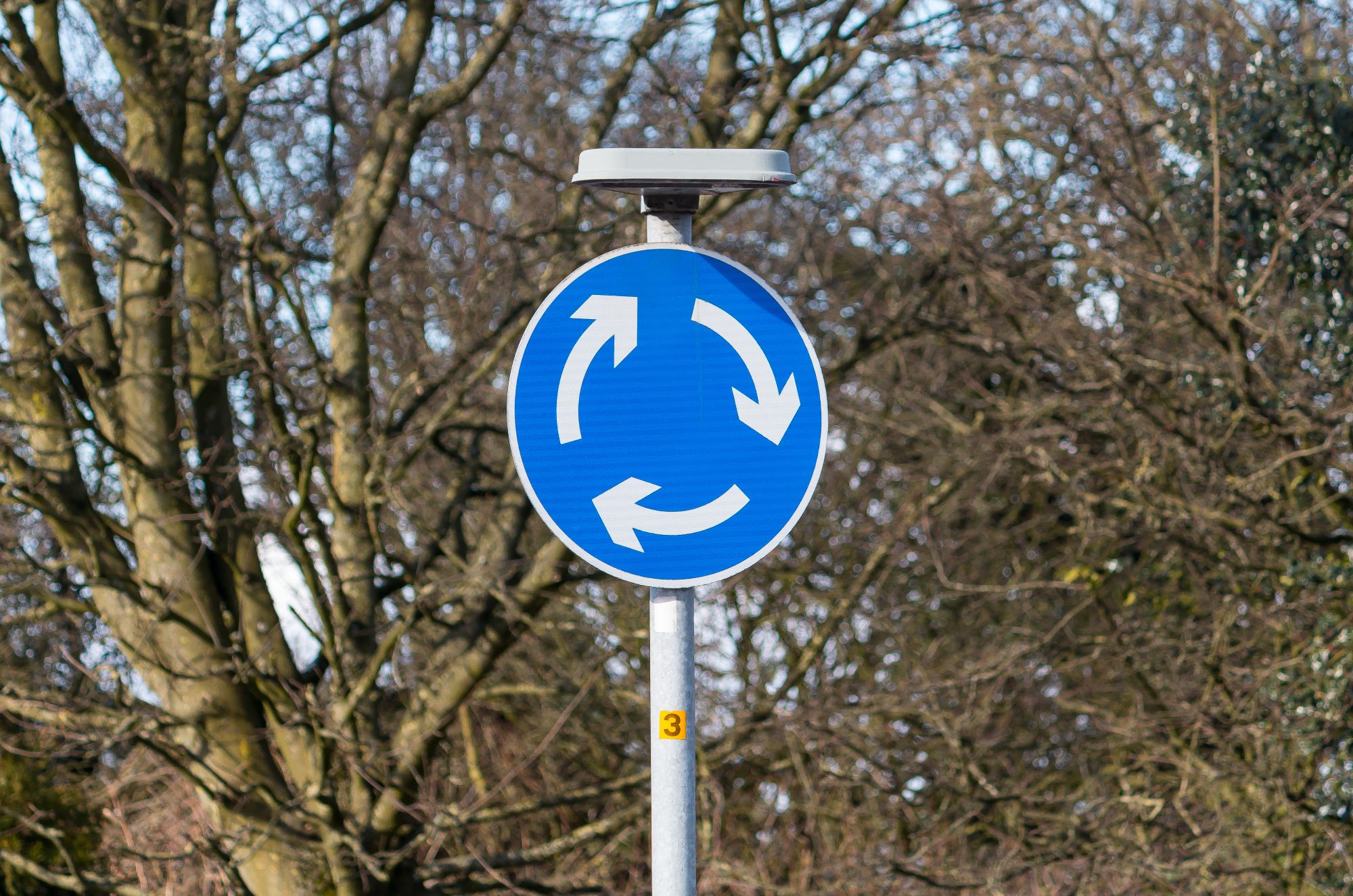
Deciding Which Lane To Use
The easiest way to deal with roundabouts is to think of it as a clock.
What you then do is split it down the middle.
If the exit that you need is at 12 o'clock or before, you use the left hand lane.
If the exit you need is AFTER 12 o'clock, then you use the RIGHT hand lane.
Unless the road markings and signs say differently

ADI Part 3 Reading Roundabout Signs
- use Mirrors – Signal – Manoeuvre at all stages
- decide as early as possible which exit you need to take
- give an appropriate signal (see Rule 186, below). Time your signals so as not to confuse other road users
- get into the correct lane
- adjust your speed and position to fit in with traffic conditions
- be aware of the speed and position of all the road users around you.
Giving Way To The Right
With roundabouts, we only give way to traffic from the right, unless the road markings say differently.
So we need to know how to choose a safe gap.
If we think of the roundabout as a clock face, if the car coming around is at, or before, the 3 O'clock position, then we have time to go
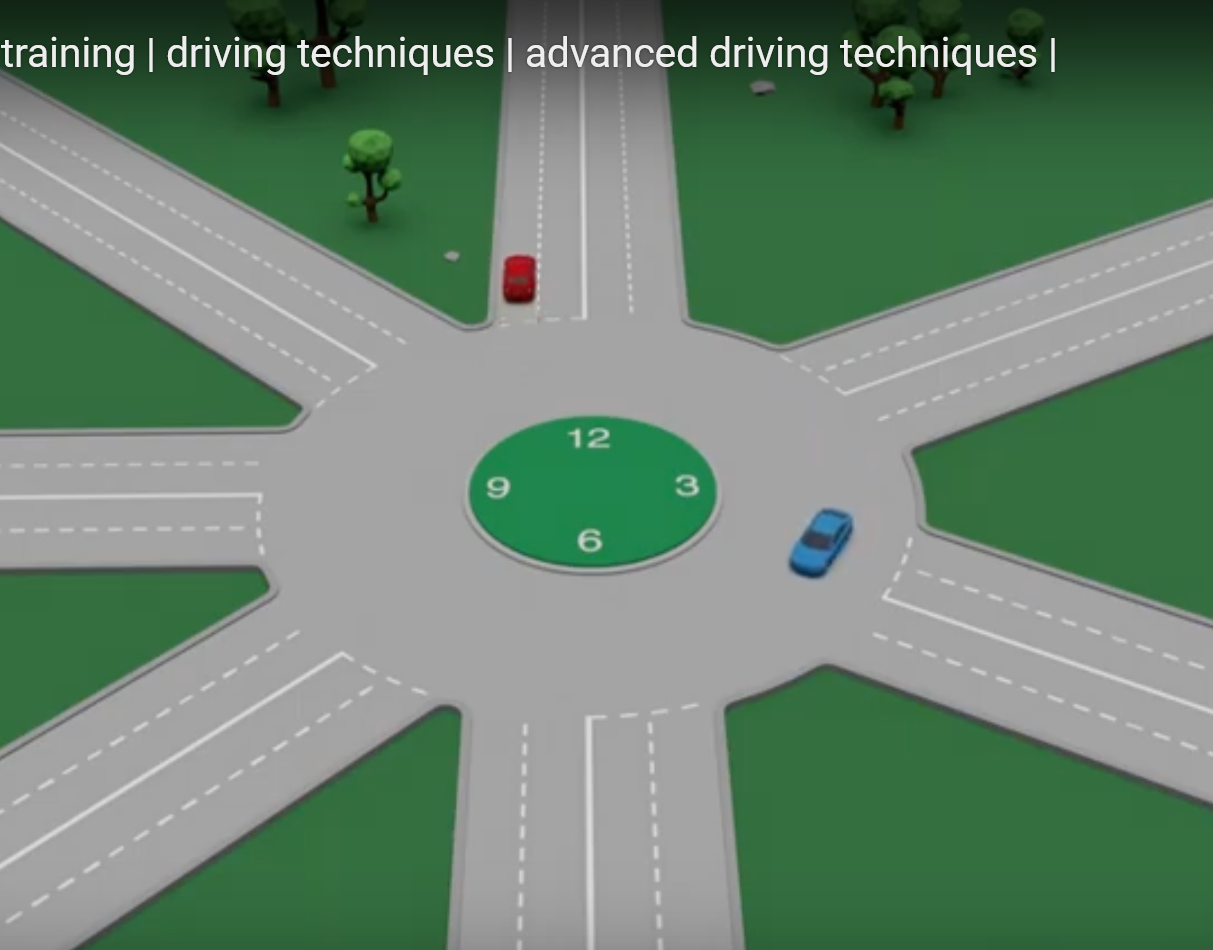
After the Three Oclock Position
If the car coming around is after the 3 oclock position
Then its better to wait for it to pass.
Or to exit the roundabout
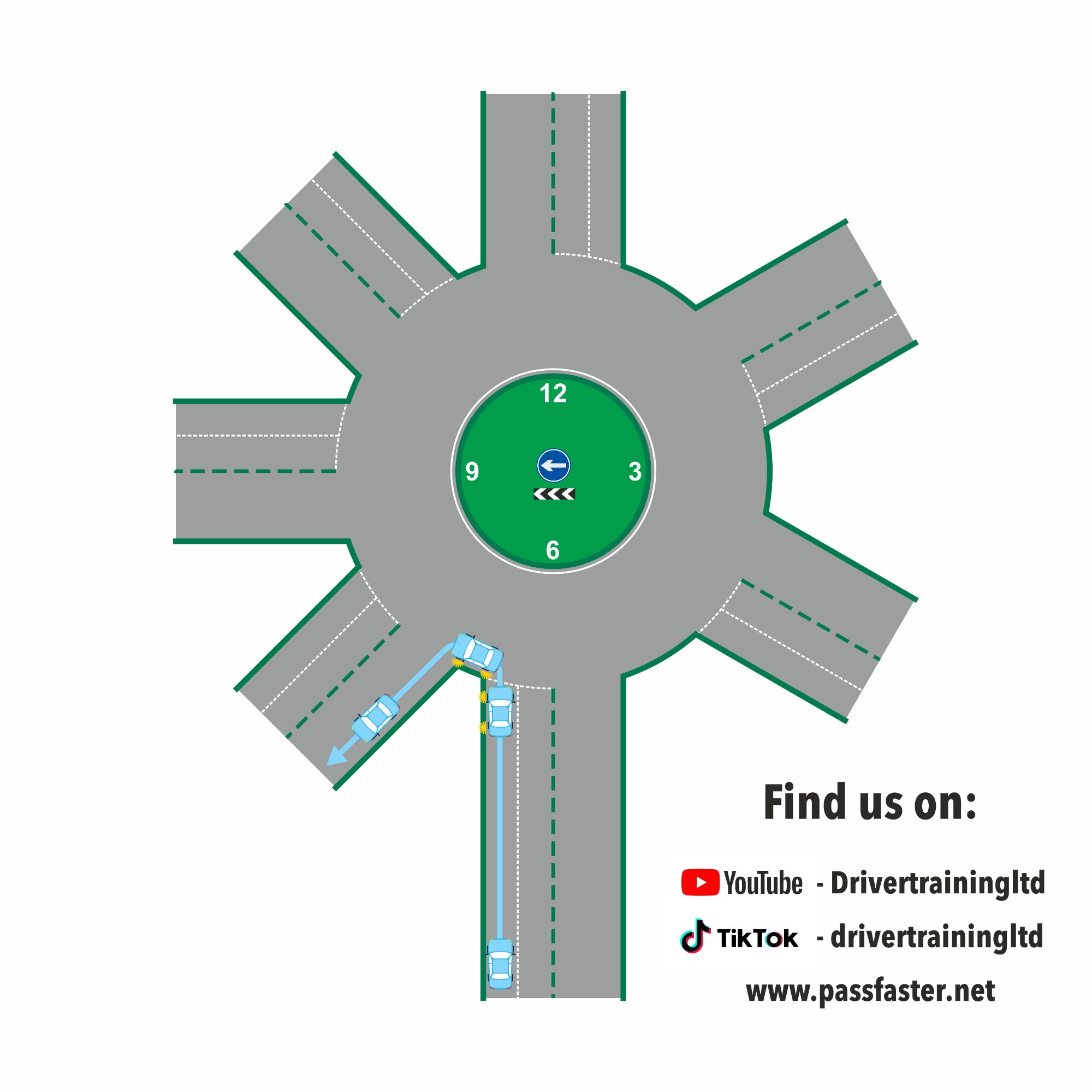
First Exit
Because the first exit is before 12 o'clock, we use the left hand on approach.
We check the centre and left mirror, signal left and then follow it around
2nd exit on the left
With this exit, we approach in the left hand lane, we keep in the left hand lane, and once we are half way past the first exit, we do centre and left mirror, signal left and then come off at exit number 2.
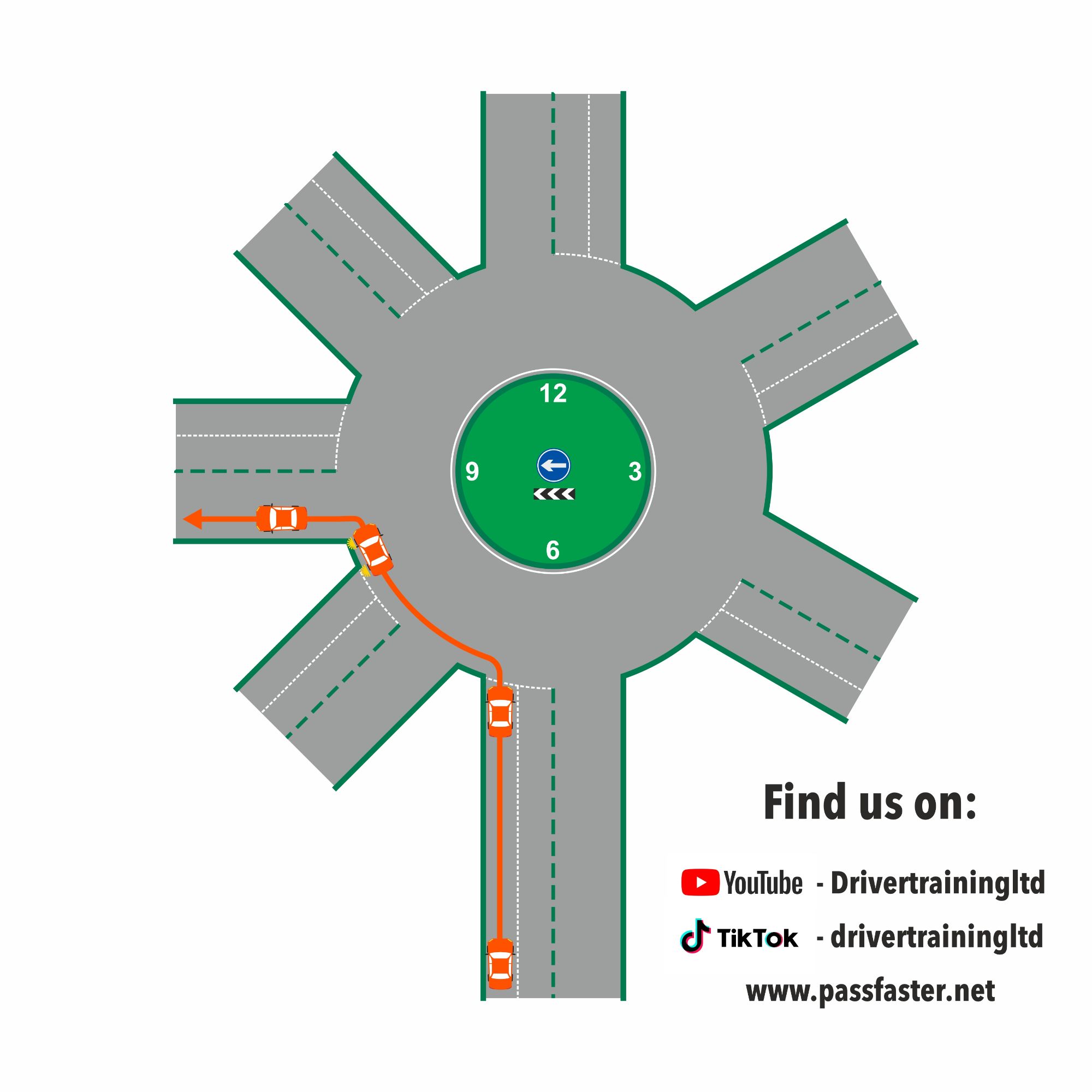
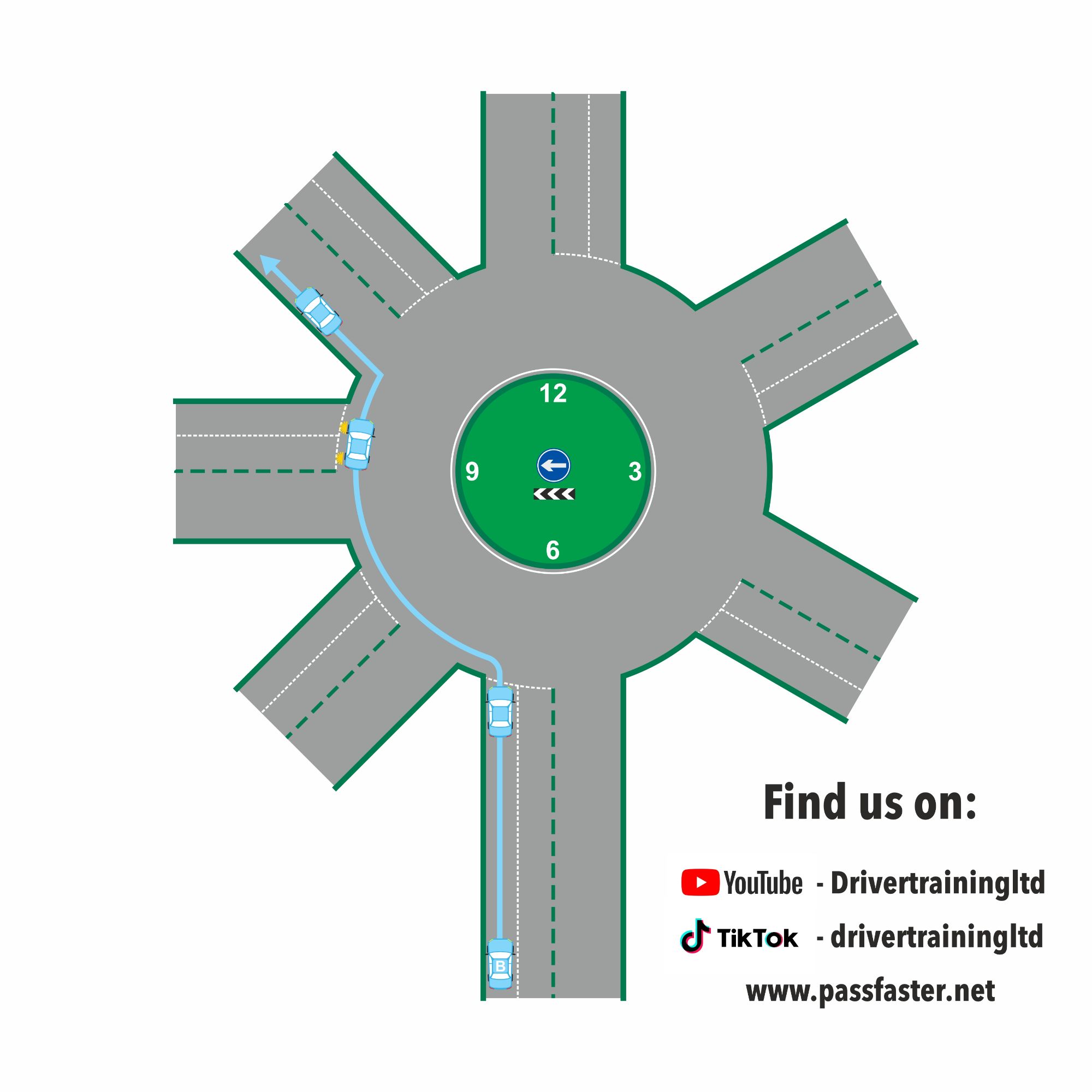
3rd Exit on the left
On this example, 3rd exit is again, before 12 oclock, so we approach in the left hand lane, we follow the left hand lane around, and count the exits, and once we are halfway past exit number two, we check the centre and left mirror then signal left and come off at exit number three.
straight ahead 4th exit
On this example 4th exit is at 12 o'clock so we still use the left lane on approach, we follow the left lane around, and we count the exits around. Half way past the third exit we do centre and left mirror and signal left to come off at the fourth exit.
Although it is straight ahead, you still need to signal left to exit the roundabout, so any pedestrians waiting to cross know where you are going and any oncoming traffic can tell where you are heading.
You know that you're going straight ahead, but how many times do we see cars with no signals on roundabouts and nobody has a clue where they are going.
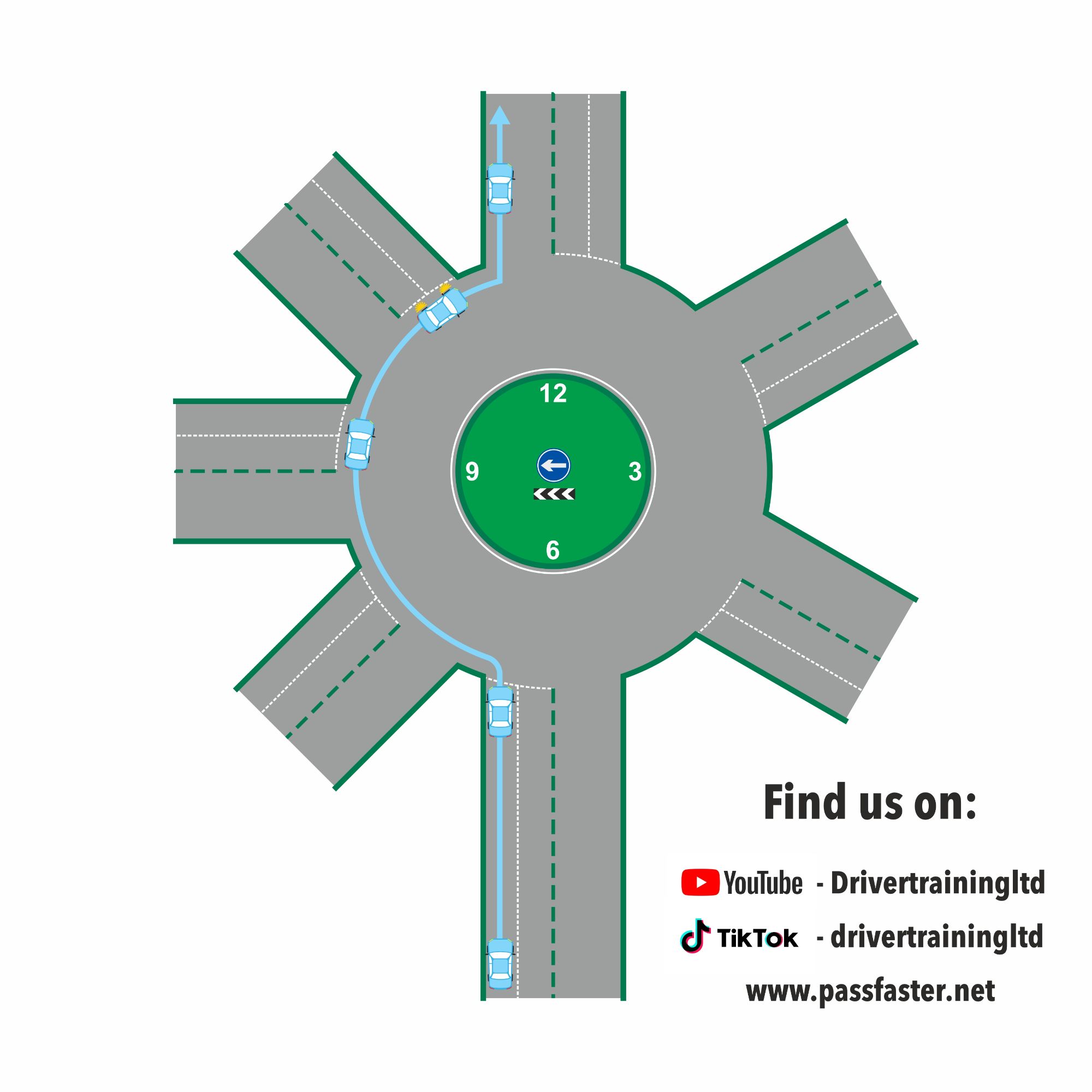
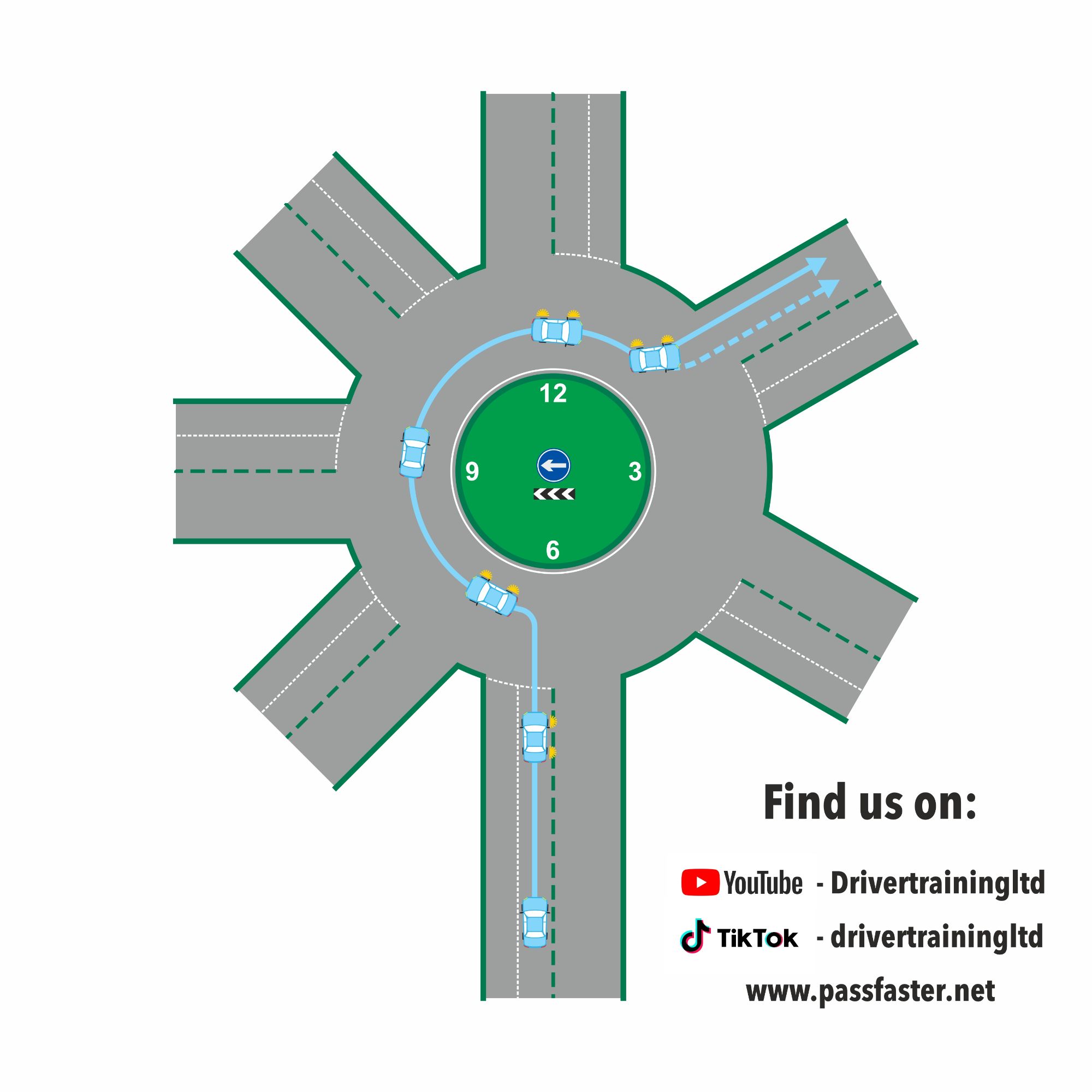
Right 5th Exit
Because this exit is AFTER 12 oclock, on approach, you need to check the centre and RIGHT mirror, signal right and then get into the right hand lane.
Keep the right signal on, this lets everyone know that you are going all the way around the roundabout.
We go across to the roundabout and stick closely to the roundabout all the way around. We count the exits and half way past exit number four, we check the centre and left mirror and signal left.
This lets everyone know that we are coming off at the next exit, then we drift across towards the left kerb. This way we show where we are heading and it stops vehicles thinking we are carrying on around and then trying to under take us.
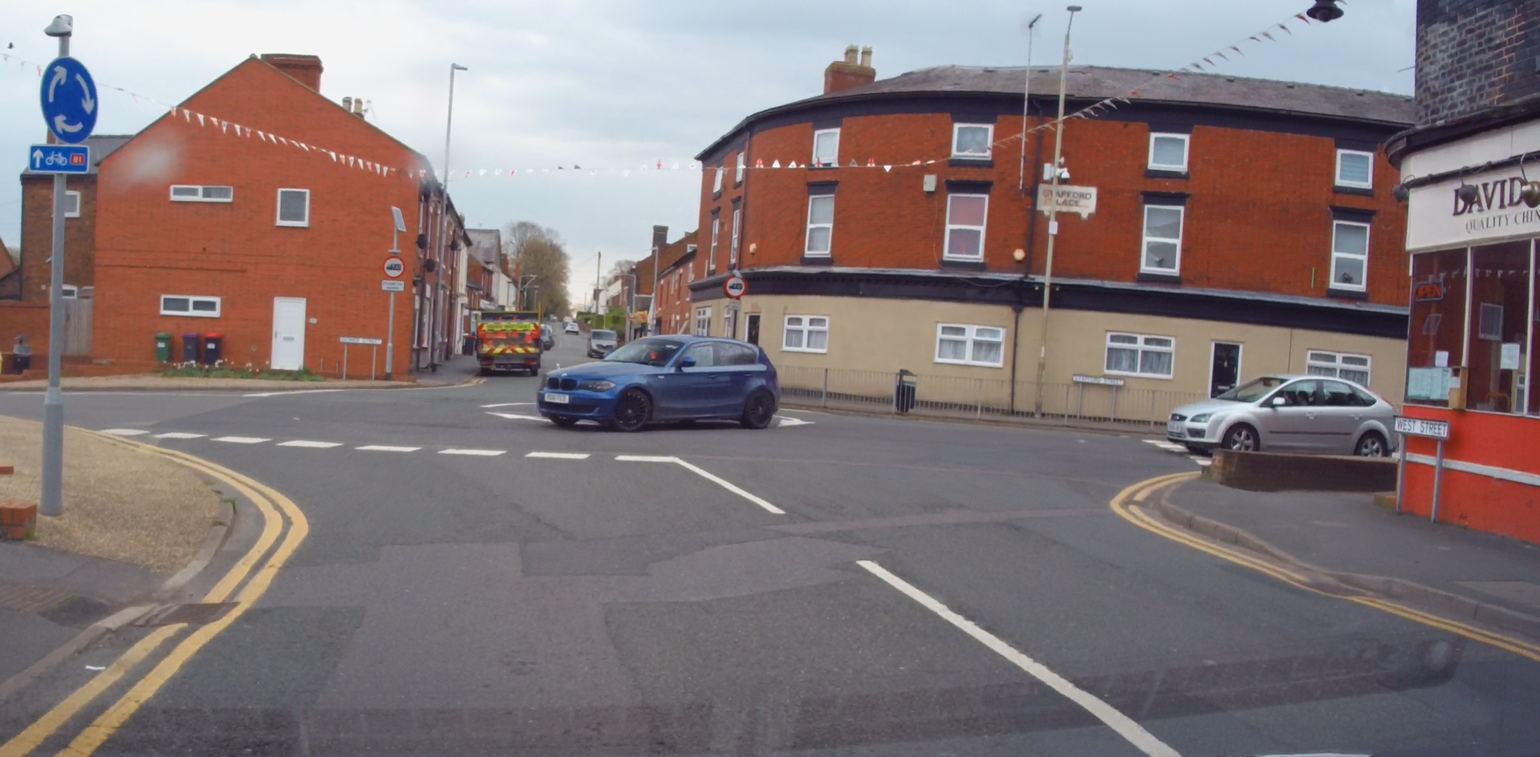
Roundabouts - Opened or Closed View?
Open And Closed Mini Roundabouts!
Due to the locations of mini-roundabouts, they have a greater chance of being located at closed junctions. A closed or blind junction is where very little can be seen of approaching traffic. Mini roundabouts are used frequently during a driving test for your ability to correctly establish is a junction (or roundabout) is open or closed and to act accordingly. A closed roundabout must be approached very slowly and if in doubt, stop before proceeding. Edge forward using clutch control slowly, constantly checking all exits and entrances.
Mini Roundabouts
Mini-roundabouts. Approach these in the same way as normal roundabouts. All vehicles MUST pass round the central markings except large vehicles which are physically incapable of doing so.
Remember, there is less space to manoeuvre and less time to signal.
Avoid making U-turns at mini-roundabouts. Beware of others doing this.
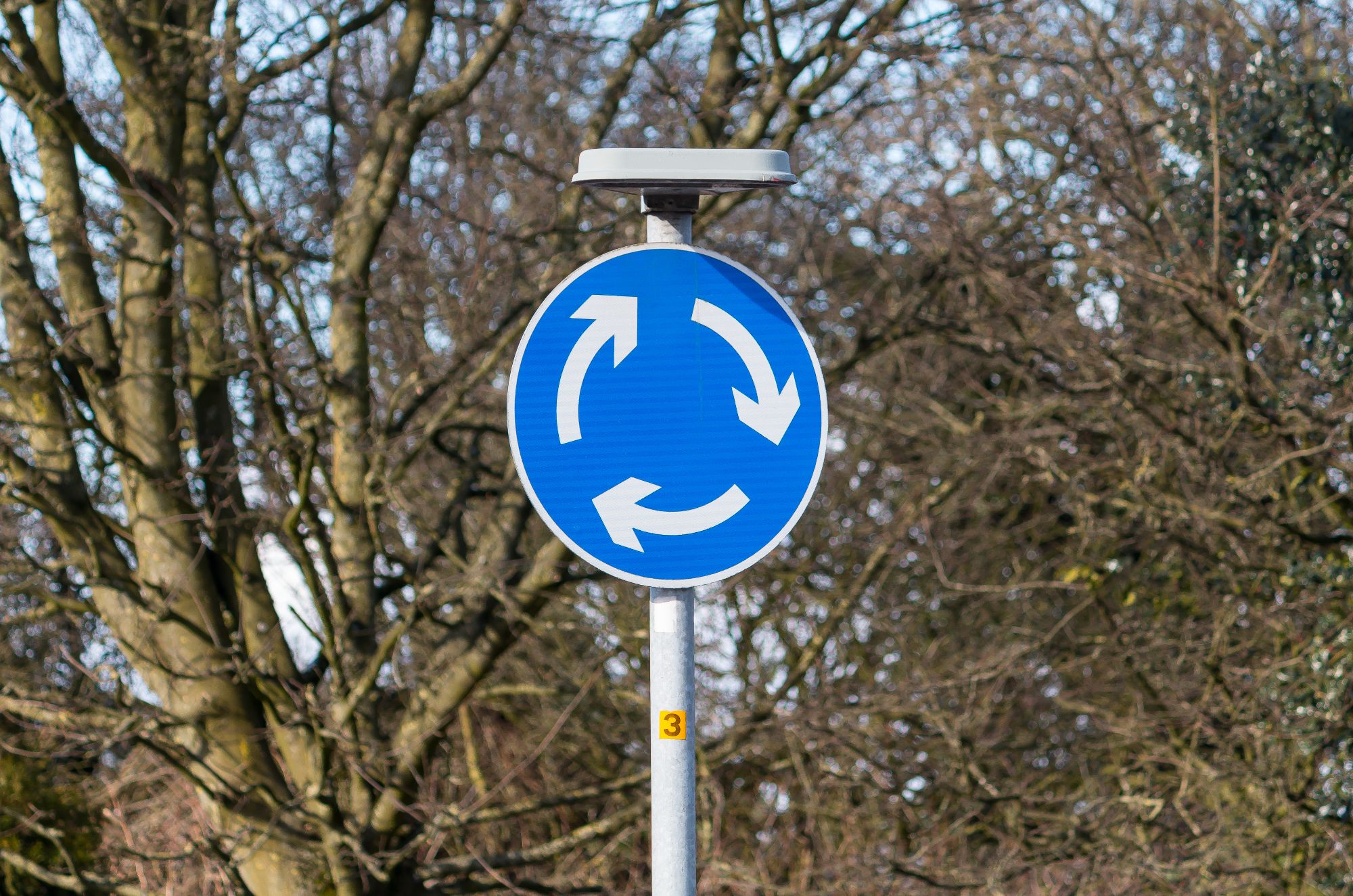
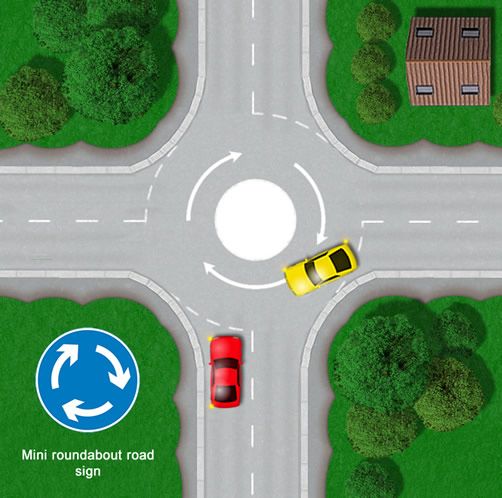
Identifying A Mini Roundabout
Mini Roundabout Road Markings!
The white centre circle of a mini-roundabout can be either simply painted onto the road or it may actually be a circular hump in the road. Whilst navigating a mini-roundabout during a driving test, try to avoid driving on the centre circle. Although clipping the circle slightly with the wheels is unlikely to fail a test, blatantly driving over the circle is likely to result in a failure.
Try also to avoid driving over any hatch marking lines on or close to the roundabout. These markings are put in place as a safety feature to separate vehicles. Hatchings surrounded by a solid white line must not be crossed, hatchings surrounded by a broken line can be crossed but it is advised not to.
Mini Roundabout U-Turn!
Avoid if at all possible to make U-turns on mini-roundabouts. As they are so small, this manoeuvre is highly dangerous. Locate a safe and quiet road to make a turn in the road or reverse round a corner. Be cautious, especially as an inexperienced driver, that other vehicles may make U-turns at mini-roundabouts.
Right Of Way At A Mini Roundabout!
As with all roundabouts in the UK, drivers approaching a mini roundabout must give way to traffic approaching from the right.
Mini Roundabout And Indicating!
As with normal roundabouts, if turning left or right at a mini-roundabout, an indication must be applied. As mini-roundabouts are small, however, a secondary exit signal does not have to be implemented. On normal roundabouts, vehicles frequently do not indicate, on mini-roundabouts, however, vehicles usually indicate, especially if they intend on turning right. If a vehicle is turning right at a mini-roundabout, due to its small size, it is far too dangerous not to indicate.
Mini Roundabout Different Directions
Turning Left at a Mini Roundabout!
Initially look into the interior mirror, followed by the left mirror and indicate to the left. As it is likely to be a residential area, just before turning left. check the left mirror again for cyclists.
Straight Ahead!
Mini roundabouts are junctions and therefore potential hazards. The examiner will expect you to be checking your interior mirror on approach to a mini-roundabout. Unlike large roundabouts, there is no need to indicate left after the first exit.
Turning Right at a Mini Roundabout!
Check the interior mirror, followed by the right-wing mirror, and indicate to the right. There is no need to indicate to the left just after the 2nd exit as you would on normal roundabouts

Avoiding Accidents on Mini Roundabouts
Mini Roundabout Accidents!
As mini-roundabouts are so small, it is essential that if you intend on turning right, as you approach a mini roundabout you must indicate to the right. Failure to do so is likely to result in an accident with a vehicle approaching from the opposite direction. Lack of indicating and unnecessarily stopping at a mini-roundabout when vehicles behind you aren’t expecting you to stop are the most frequent cause of mini-roundabout accidents
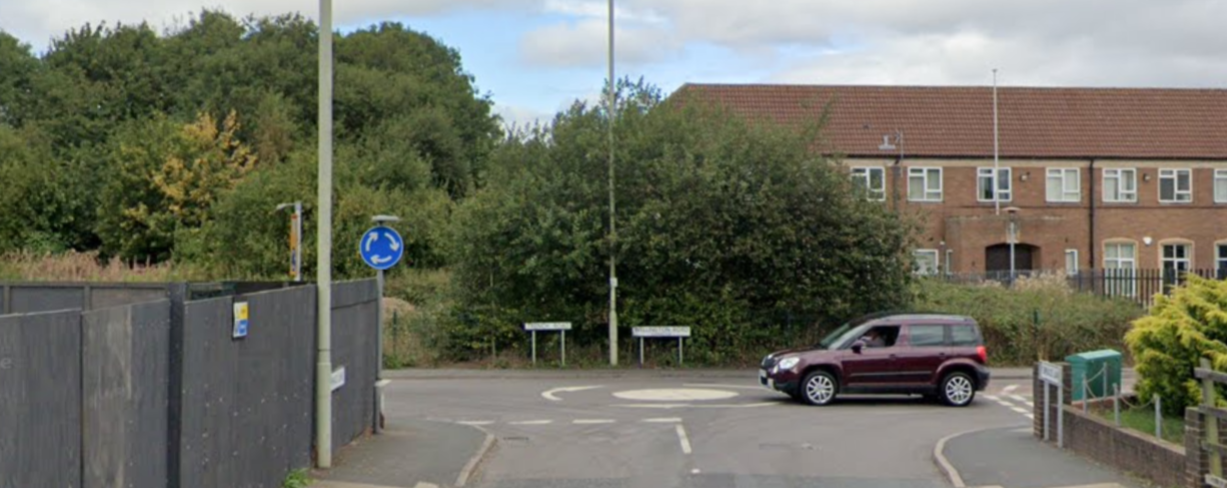
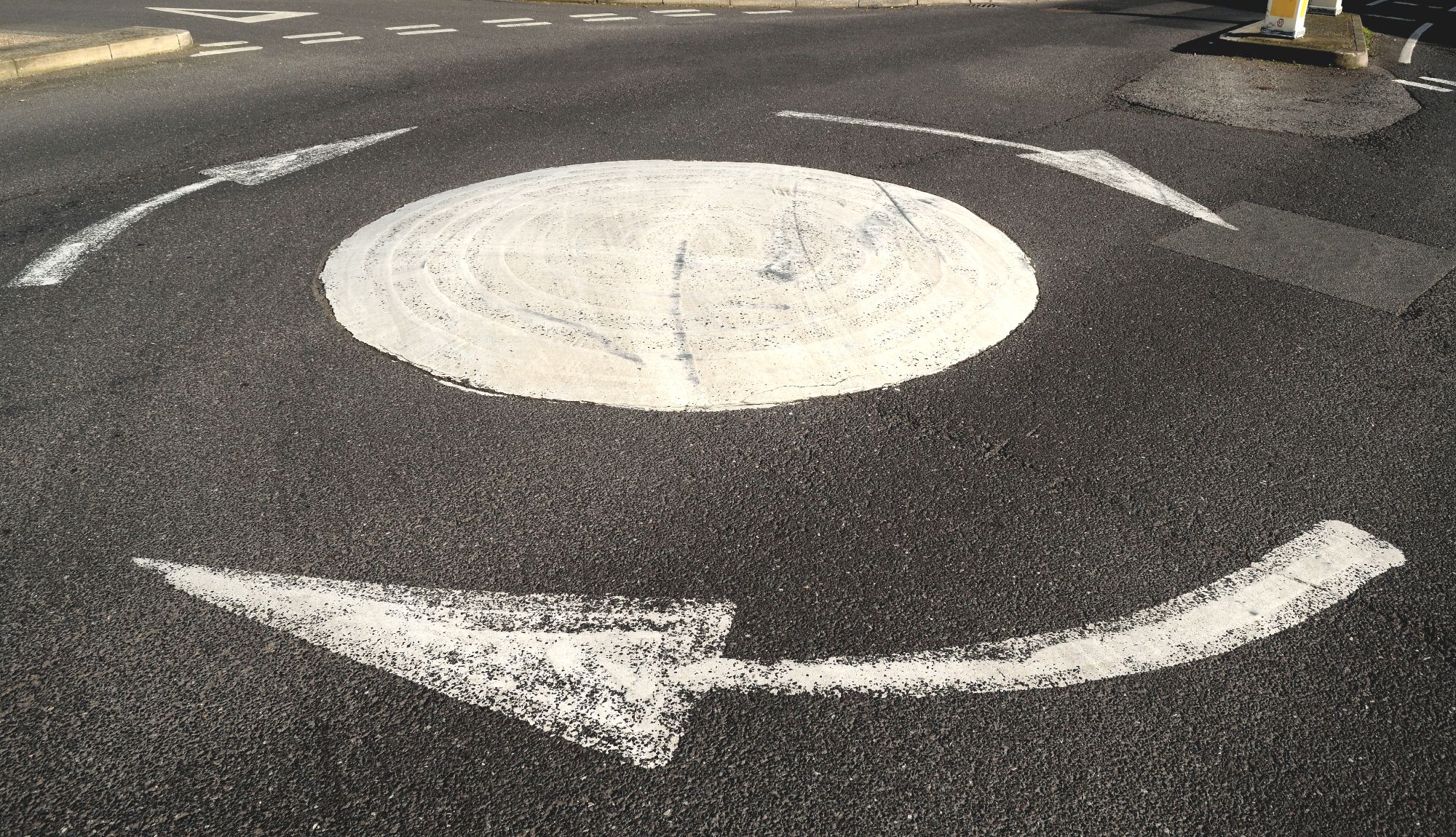
Stopping at a Mini Roundabout
Stopping at Mini Roundabouts!
Unnecessarily stopping at mini-roundabouts is an easy way to fail a driving test. The reason, a vehicle behind you will not be expecting you to stop and so could result in a rear collision accident. If the roundabout is closed or you need to give way to a vehicle or cyclist from the right, this is usually the only reason you should need to stop.
Obviously, mini-roundabouts are small and for a learner driver to see a car approaching the roundabout from the left, can be tempting to stop, especially if the vehicle appears to be traveling at speed. Unless the vehicle is relatively close to the roundabout, is traveling at excessive speed and you feel that they will not be able to stop, don’t be tempted to stop and give way to them. Remember, this is dangerous for vehicles behind and will fail the driving test.
What are the stubs
Dealing With Laned Roundabouts
gaps on Roundabout signs?
Contact Us
Hours
Monday - Friday:
09:00 am - 6:00 pm
Saturday - Sunday:
10:00 am - 3:00 pm
